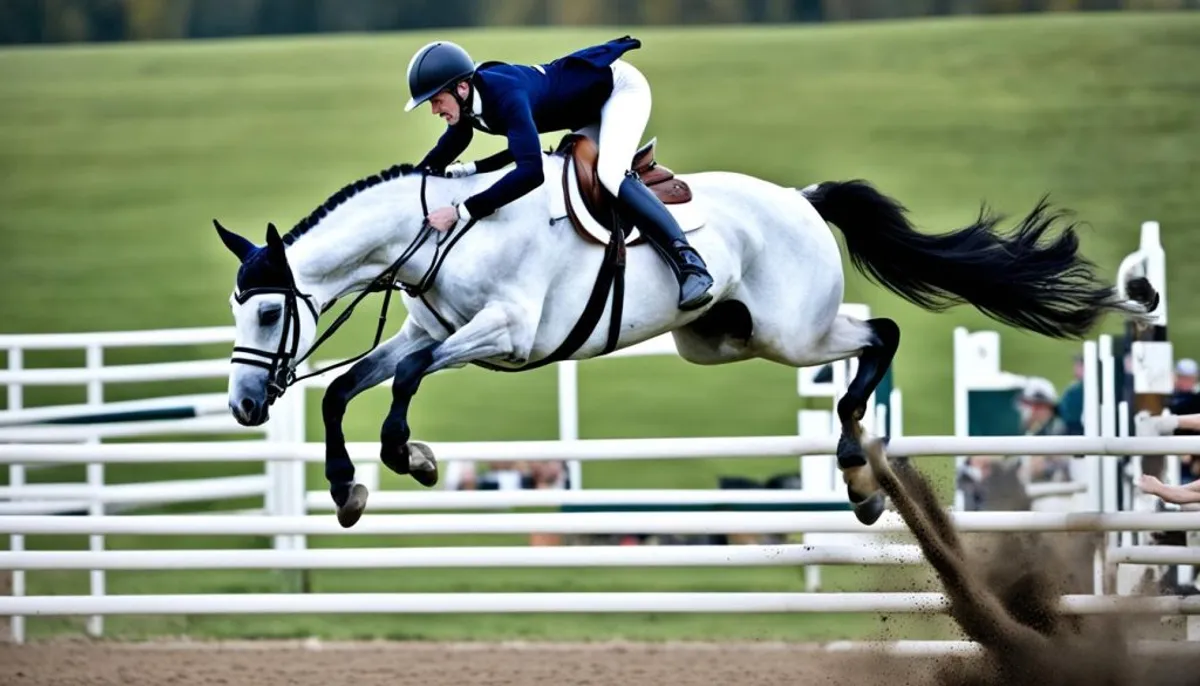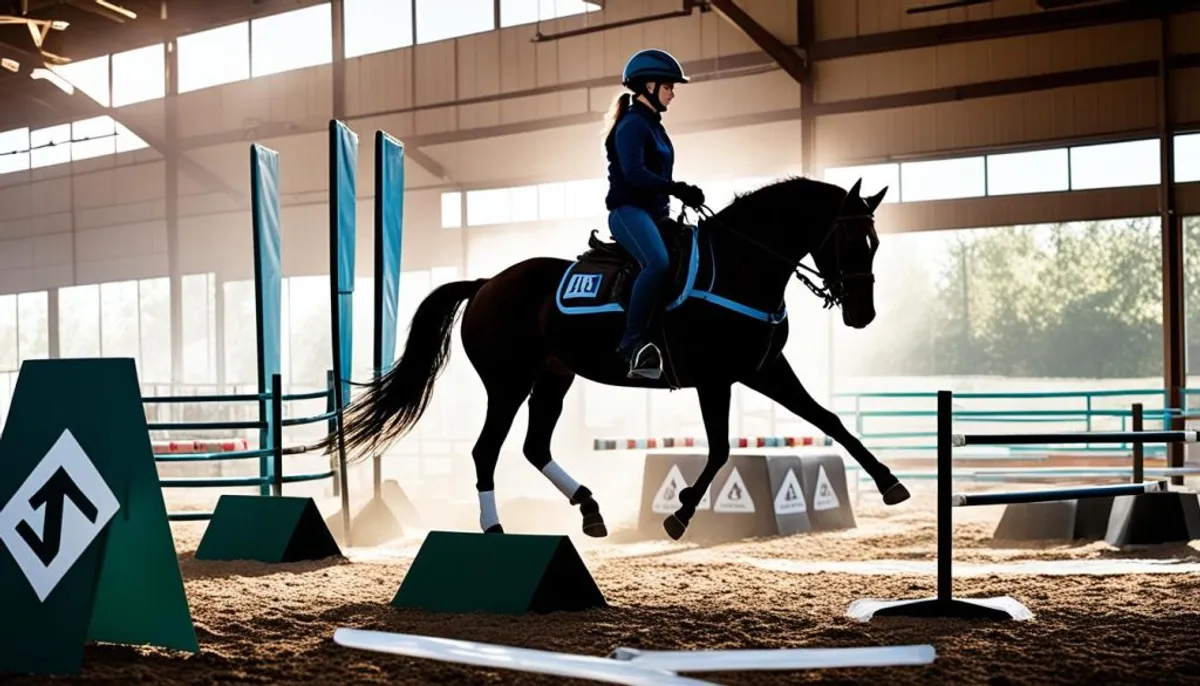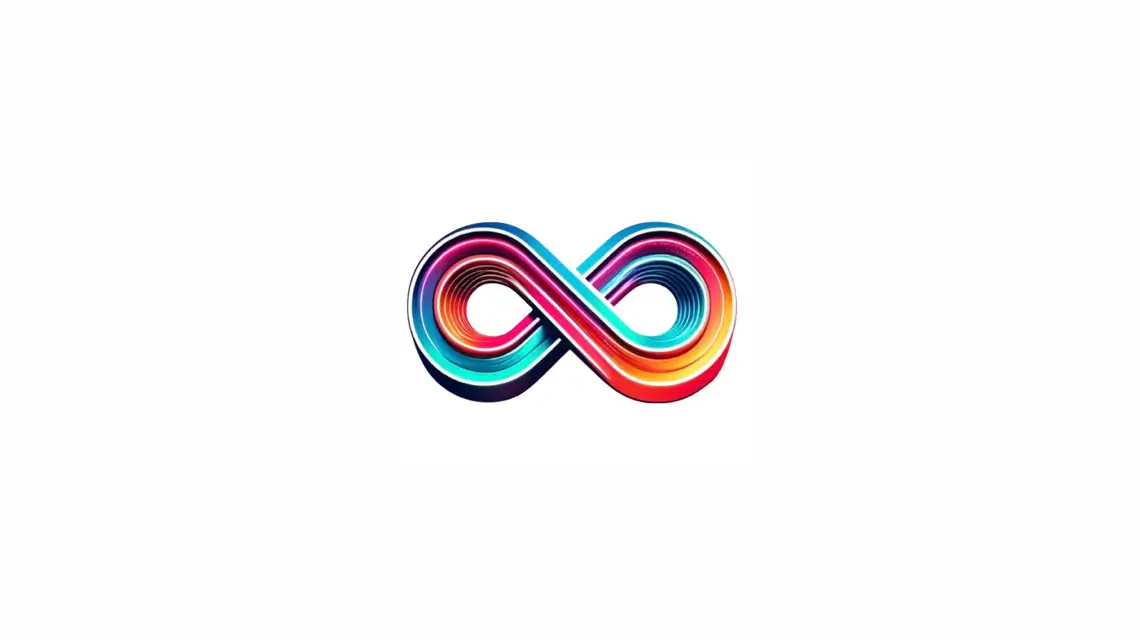Equestrianism is a sport loved by many. However, there are significant risks to be aware of. The main dangers are falls and how to handle horses.
This can cause serious injuries such as concussions or fractures. Nevertheless, practicing equestrianism safely is possible. It allows you to take advantage of the benefits of this sport.
By following the right precautions, you can enjoy it safely. Read this article to learn how.

Key points to remember
- Equestrianism involves risks related to falls and horse handling
- Equestrian accidents can lead to serious injuries such as concussions, sprains, or fractures
- With the right precautions, equestrianism can be practiced safely
- It is important to choose the right horse and wear appropriate protective gear
- Equestrian centers have safety obligations and supervision to adhere to
Equestrianism - A risky activity
Equestrianism is exciting but can be dangerous. Riders face several types of joint and muscle injuries. These often occur after falls or inadequate handling of the horse. These incidents can cause concussions, sprains, fractures, or even bites.
Common injuries related to equestrianism
- Concussions
- Sprains
- Fractures
- Bites
Main causes of equestrian accidents
- Lack of proper supervision and guidance
- Poor communication and understanding with the horse
- Using a mount unsuitable for the rider's level
It is important to protect yourself before riding. You must take the right precautions to avoid fall risks. And it is not pointless to be aware of the potential dangers associated with equestrianism.
Essential precautions for riders
Practicing equestrianism safely requires a few important actions. First, always wear a helmet, even if you are already skilled. This helmet reduces serious injuries if you fall.
Wearing a protective helmet
The helmet is vital in equestrianism. It is designed to prevent head injuries if an accident occurs. All riders, whether beginners or happy experts, must wear it to ride worry-free.
Choosing a mount suitable for your level
You should choose a horse that suits your level. A horse that is too hard to control can be dangerous. Your safety also depends on your ability to manage the horse. Calm and gentle horses are perfect for beginners and younger riders.
With these important steps, you can enjoy riding safely. Wearing a helmet and choosing the right mount are easy yet vital actions. They ensure a pleasant and protected equestrian experience.
Dangerous equestrianism - The importance of supervision
Riding with structured practice is safer, especially for beginners and children. Studies show that injuries are less common when properly guided. The role of a competent instructor is key. They help the rider develop good reflexes towards the horse.
The supervision of a professional is vital during more advanced or fast-paced lessons. It reduces the chances of accidents. Learning safely and experiencing the horse's reactions helps build solid confidence.
Thus, for more safety in equestrian centers, supervision of riders is crucial. Compared to unsupervised riding, structured lessons offer more safety and learning while progressing at your own pace.
Secure equipment and environment
To be safe while riding, more than just good supervision is needed. It is vital to properly maintain equipment and follow the rules around horses. You should often check that the saddle, bridle, and helmet are in good condition. This helps prevent accidents. Respecting safety rules with the horse is also crucial. For example, you should announce when you approach a horse and stay clear of its reactions. These measures help riders stay calm and focused.
Regular maintenance of equipment
Maintaining equipment is vital for safety while riding. You should frequently check the saddle, bridle, helmet, and other accessories. This helps identify problems or signs of wear in time.
Respecting safety rules around the horse
In addition to equipment, respecting the rules near horses is essential. This means announcing your approach, keeping a safe distance, and tying the horse when necessary. These simple actions reduce the risk of accidents.

| Equipment to maintain | Recommended maintenance frequency |
|---|---|
| Saddle | Inspection and lubrication every 2-3 months |
| Bridle | Cleaning and checking after each use |
| Helmet | Visual inspection before each use |
| Stirrups | Checking for sturdiness every 6 months |
Learning to fall and listen to your body
Equestrianism is a great sport, but sometimes falls happen, even when being very careful. To reduce injuries, you must know how to fall correctly. This means learning to roll on the ground to avoid injury.
Listening to your body is crucial to avoid long-term injuries. Equine physiotherapy professionals help riders. They show how to recognize pain signals and what to do.
- Learn safe falling techniques
- Be attentive to the signals your body sends
- Consult an equine physiotherapist in case of pain
By combining these methods, riders can practice longer and more safely. It is a way to stay healthy by listening to your body.
| Falling techniques | Benefits |
|---|---|
| Rolling on the ground | Absorbs impact, limits injury risks |
| Falling straight down | High risk of serious injuries |
Legal responsibilities of equestrian centers
Equestrian centers are legally responsible for the safety of riders. They must ensure that practices are safe. This means employing qualified instructors and providing well-maintained equipment.
Safety and resource obligations
If an accident occurs, the center can be held liable. To avoid this, they must:
- Obtain suitable insurance
- Ensure that riders have a federal license for protection in case of injury
Insurance and federal licenses
Knowing the legal framework of equestrianism is crucial for safety. Equestrian centers must follow these rules. It is to protect riders.

Despite the risks, centers must act to reduce them. This protects all enthusiasts of this sport.
Conclusion
Equestrianism is exciting but not without risks. To enjoy it safely, a few precautions must be taken. Always wear a protective helmet and choose a suitable mount. It is also crucial to respect safety rules.
Having appropriate supervision and good safety equipment helps. This allows you to ride with less danger. Thus, everyone who loves this sport can practice it safely.
Practicing equestrianism safely comes down to a few simple actions. Taking responsibility and following these measures allows for free enjoyment. Keeping safety in mind, without forgetting the fun, is really important.
Ultimately, equestrianism is great. It is a sport where one must remain vigilant. By training and following expert recommendations, it can be practiced in a secure environment.
FAQ
What are the main risks associated with equestrianism?
The dangers in equestrianism include falls and contact with the horse. They can lead to serious injuries. These injuries include concussions, sprains, fractures, or bites.
What are the most common causes of accidents in equestrianism?
Accidents can happen due to lack of supervision. It can also be due to poor communication with the horse. Additionally, a mount that is unsuitable for the rider can increase risks.
What are the essential precautions for practicing equestrianism safely?
It is crucial to wear a helmet. Choosing a horse that matches your level is also important. Being accompanied by a competent professional reduces the risk of accidents.
Why is supervision by a professional so important for rider safety?
Training with a professional helps the rider react correctly. They learn how to behave with horses. The professional can also prevent accidents by monitoring the interaction between the rider and the horse.
What other elements are essential for ensuring rider safety?
In addition to the mentioned points, regular maintenance of equipment is crucial. It is fundamental to respect rules around the horse to avoid injuries. Learning to fall properly is also important for protection.
What are the responsibilities of equestrian centers regarding safety?
Equestrian centers must ensure the safety of riders. This includes all necessary measures, such as providing well-maintained equipment. They must also offer quality supervision. Obtaining suitable insurance is an important step to cover risks.
RelatedRelated articles



